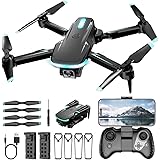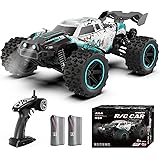Imagine the excitement as you unpack a box of components, knowing that with a bit of dedication and the right tools, these seemingly disparate parts will soon transform into a sophisticated flying machine. That initial moment of unboxing, as shown in the accompanying video, truly sets the stage for an incredible journey into the world of DIY drone building. Crafting your own drone offers a unique satisfaction, allowing for a deeper understanding of its mechanics and flight dynamics. However, the path to building a hexacopter, especially for beginners, might initially appear daunting.
This article aims to demystify the process of building a DJI F550 Hexacopter, expanding on the components and tools introduced in the video. The goal is to provide a clear, step-by-step understanding of what is involved in bringing your aerial dreams to life. Consequently, even those new to drone assembly can approach this project with confidence, equipped with essential knowledge and practical insights.
Unveiling the Hexacopter Kit: Essential Components for Your DJI F550 Build
The foundation of any successful drone build lies in understanding its core components. As demonstrated in the video, the DJI F550 Hexacopter frame kit serves as an excellent starting point for this ambitious project. Unlike a quadcopter, which utilizes four motors for propulsion, a hexacopter is distinguished by its six motors, providing enhanced stability and lifting capacity. This configuration is particularly advantageous for those interested in carrying heavier payloads, such as high-quality camera equipment.
A closer look at the key elements of your **DJI F550 Hexacopter** build reveals a collection of specialized parts. These components are meticulously chosen to ensure optimal performance and safety during flight. Without a proper understanding of each piece’s function, the assembly process can become significantly more challenging. Therefore, it is important for each component’s role to be clearly understood.
The Heart of the Drone: Motors, ESCs, and Propellers
The propulsion system is undeniably critical to any flying machine, and a hexacopter relies on a robust setup. Six motors are supplied with the kit, offering the necessary thrust for vertical lift and controlled movement. These motors are precisely matched with Electronic Speed Controllers (ESCs), which are devices responsible for regulating the power delivered to each motor. A common misconception among new builders is that any ESC will work; however, matching ESCs to your motors and battery is essential for efficiency and preventing damage.
For flight, eight propellers are included, providing two spares which is a thoughtful provision given how easily propellers can be damaged. These propellers are designed to work in conjunction with the motors, generating the lift that allows the hexacopter to defy gravity. Imagine if incorrect propellers were chosen; the drone might struggle to lift off or experience severe instability, highlighting the importance of using the recommended parts.
The Brains of the Operation: Flight Controller and GPS
Controlling a multi-rotor aircraft requires a sophisticated system, and this role is admirably filled by the NAZA-M Lite Flight Controller. This central processing unit acts as the brain of your drone, interpreting commands from your remote controller and stabilizing the aircraft during flight. Furthermore, GPS functionality is integrated, enabling features such as precise position holding and return-to-home capabilities. Without a reliable flight controller and GPS, the drone would be exceptionally difficult to maneuver, making these components indispensable for a beginner-friendly build.
Power and Control: Battery, Receiver, and Controller
Powering your hexacopter requires a suitable battery, typically a LiPo (Lithium Polymer) battery, which offers a high power-to-weight ratio. An XT60 connector is specified as the standard for connecting the battery to the drone’s power distribution board. A small adapter is also mentioned for ensuring proper battery connectivity, which illustrates how crucial even minor details are in electronic assembly. Conversely, an incompatible power connection could lead to severe electrical issues or even fire, so attention to these small parts is critical.
Communication between the pilot and the drone is facilitated by a controller and its corresponding receiver. The controller is what you hold in your hands, sending signals wirelessly to the receiver mounted on the drone. This receiver then relays these commands to the flight controller, translating your joystick movements into flight maneuvers. A basic, reliable controller and receiver system is perfectly adequate for initial drone flights, allowing focus to remain on learning fundamental controls.
Adding Versatility: Camera Gimbal and Landing Gear
For those aspiring to capture aerial footage, a camera gimbal is an invaluable addition, even a super basic one-axis gimbal. This device stabilizes the camera, compensating for the drone’s movements and vibrations, thus ensuring smoother video recordings. While the video mentions a basic one, more advanced gimbals offer multi-axis stabilization. Furthermore, custom landing gear is also part of this build, offering enhanced protection for the drone’s underside and electronics during landings.
Essential Tools for Drone Assembly: Preparing for Your Hexacopter Build
Beyond the components themselves, having the correct tools is paramount for a smooth and safe assembly process. The video succinctly lists the necessary implements, demonstrating that a complex project like building a drone does not necessarily require an extensive workshop. Instead, a few key tools, expertly utilized, are all that is needed to achieve professional results.
Each tool plays a specific role, contributing to the precision and integrity of the final build. Attempting to substitute specialized tools with inadequate alternatives often leads to frustration or, worse, damage to delicate components. Therefore, ensuring these specific tools are at hand before beginning assembly is a crucial preparatory step.
Precision and Connection: Screwdrivers and Soldering Equipment
A HEX 2 screwdriver is specified for the assembly of the frame and various other mounting points. Using the correct size screwdriver is vital, as it prevents stripping screw heads, which can be an incredibly frustrating setback. Many small screws are typically involved in such a build, so a comfortable, high-quality screwdriver significantly improves the experience.
Soldering is an unavoidable skill in drone building, particularly for connecting ESCs, motors, and power distribution boards. A soldering iron, along with solder and flux, forms the core of your electrical connection toolkit. Flux assists the solder in flowing cleanly and creating strong, reliable joints. Imagine if poor solder joints were made; intermittent power or signal loss could cause a drone to fall from the sky, underscoring the importance of good soldering technique. Electrical tape is also necessary for insulating exposed wires and connections, preventing short circuits.
The Journey of Building a Drone: From Parts to Flight
With all the components laid out and the necessary tools at the ready, the actual building process of your DJI F550 Hexacopter can commence. This stage is where all the theoretical knowledge of parts and tools translates into tangible progress. Patience and methodical work are often rewarded with a robust and reliable flying machine, whereas rushing can lead to easily avoidable errors. The careful following of instructions is paramount during this phase.
Initial Assembly Steps: Frame and Motor Mounting
The initial steps typically involve assembling the frame itself, which forms the skeletal structure of the hexacopter. Motor mounts are then attached to the frame arms, ensuring that each motor is securely fastened and correctly oriented. It is important that these steps are completed with precision, as any imbalance or loose components could significantly impact flight performance. Each motor must be aligned perfectly to achieve symmetrical thrust, which is essential for stable flight characteristics.
Wiring and Connections: The Electrical Network
Following the frame assembly, the electrical network of the drone is carefully constructed. This involves soldering the ESCs to the power distribution board, and then connecting them to the motors. The flight controller is mounted centrally, and all relevant wires—from the receiver, GPS, and ESCs—are connected to its various ports. Proper wire management is often overlooked, but it is critical for preventing wires from interfering with propellers or getting snagged during flight. A neat wiring job also aids in future troubleshooting.
The process of building a drone, particularly a Hexacopter, is an enriching experience that combines mechanical assembly with electronic integration. Understanding each part’s function and applying careful construction techniques are key to a successful maiden flight. The thrill of seeing your self-built **DJI F550 Hexacopter** soar into the sky is an unparalleled reward for the effort invested.











